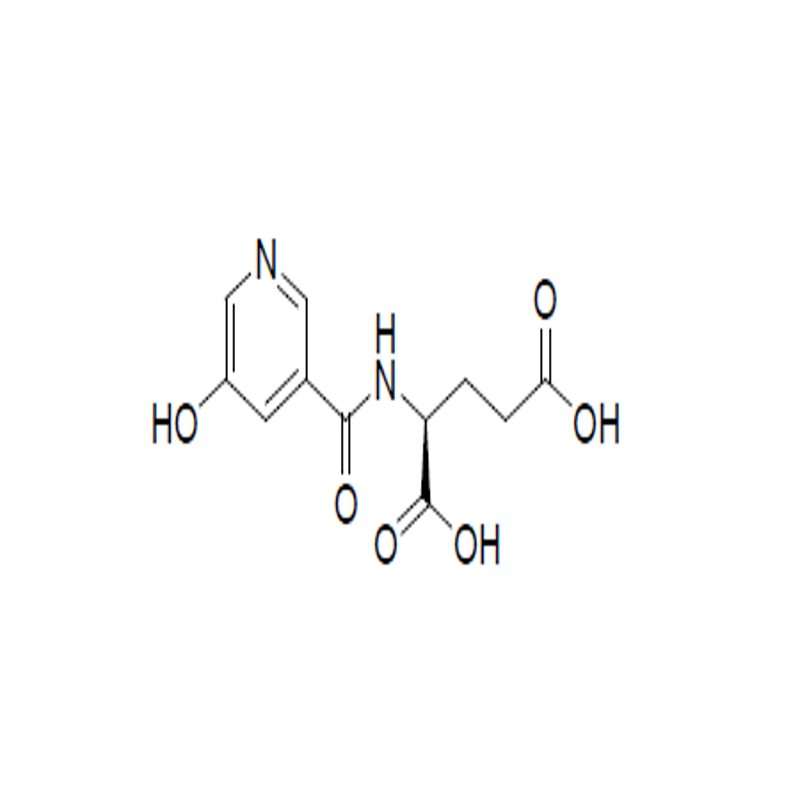-
Categories
-
Pharmaceutical Intermediates
-
Active Pharmaceutical Ingredients
-
Food Additives
- Industrial Coatings
- Agrochemicals
- Dyes and Pigments
- Surfactant
- Flavors and Fragrances
- Chemical Reagents
- Catalyst and Auxiliary
- Natural Products
- Inorganic Chemistry
-
Organic Chemistry
-
Biochemical Engineering
- Analytical Chemistry
- Cosmetic Ingredient
-
Pharmaceutical Intermediates
Promotion
ECHEMI Mall
Wholesale
Weekly Price
Exhibition
News
-
Trade Service
| Carp is everywhere! Where does its strong adaptability come from? |
Photo courtesy of the interviewee of Furui Carp No.
2
2
Among vertebrates, only a few species are polyploid
.
The common "four major home fishes" in daily life-herring, grass carp, silver carp, and bighead carp are all diploid, while carps belonging to the same family Cyprinidae are allotetraploid, which are widely distributed around the world and require excellent adaptation Where do capabilities and rich phenotypes come from?
In addition, whether there is convergent evolution in polyploid vertebrates remains undiscovered
.
On September 30, in a study published in "Nature-Genetics", the team of researcher Li Jiongtang from the Biotechnology Research Center of the Chinese Academy of Fishery Sciences cooperated with the Heilongjiang Fisheries Research Institute and the Freshwater Fisheries Research Center of the institute for the first time.
The phenomenon of subgenomic convergent evolution was observed in polyploid vertebrates, ten expression divergence strategies were systematically discovered, and the genomic structural variation and genetic effects of Songpu mirror carp, Huanghe carp and Furui carp 2 were analyzed
.
These results provide new insights for explaining the adaptive evolution mechanism of polyploid, and also provide new theoretical basis and resources for the improvement of important traits of carp
.
Assemble the genomes of diploid ancestors and related species
Assemble the genomes of diploid ancestors and related species Compared with plants, vertebrate polyploid events are relatively rare, and are only found in Cyprinidae, Sturgeon, Salmonidae, and Xenopus
.
Carp is distributed and farmed all over the world
Previously, studies have completed the mapping of the whole genome sequence of carp
.
"This time, we have further improved the carp genome map.
First, the integrity and continuity of the carp genome have been significantly improved, which is reflected in the rapid decrease in the number of gaps, which has dropped from 57939 to 479190 to 13,694
.
Secondly, the genome anchoring rate has increased from 875Mb~1.
Crucian carp, which is the same allotetraploid as carp, is also the focus of the team's research.
This paper also perfects the gene annotation of crucian carp, predicting 48,857 genes.
Compared with the previous results of crucian carp genome annotation, the completeness of gene annotation is 92.
3% Increased to 97.
8%, and the missing rate dropped from 3.
3% to 0.
8%
.
The pictures are as follows: ① tiger skin fish ② yellow river carp ③ spiny bream ④ Songpu mirror carp
.
Photo courtesy of the intervieweeThe pictures are as follows: ① tiger skin fish ② yellow river carp ③ spiny bream ④ Songpu mirror carp
In order to better carry out follow-up research, the team assembled for the first time the high-quality genomes of the related species of bream-like bream and the ancestor species of tiger skin fish.
The genome anchoring rate was 88.
6% and 86%, and 24284 and 21943 genes were predicted, and the deletion rate was Only 2% and 3.
6%
.
"High-quality continuous genome is an important prerequisite for evolutionary research
.
It is precisely because of this genome update that has laid a solid foundation for our follow-up research
Surprising discovery that breaks traditional cognition
Surprising discovery that breaks traditional cognition The traditional view is that the genome is prone to events such as rapid loss of DNA fragments, pseudogenization, and subgenome fusion after genome polyploidy, which restores the genome to the level of duplication and causes structural and sequence differences between subgenomes.
This is called Divergent evolution
.
However, the phenomenon of convergent evolution in the subgenome has not been discovered
"Using the genomes of the bream-like bream and the tiger skin fish as the reference system, we found that the two sets of subgenomes A and B tend to be more similar after the two ancestral species are crossed-'convergence' instead of trending differences-'divergence' '
.
" These results are completely different from the divergence of traditional views, which made the research team feel very novel.
The A and B subgenomes of common carp and crucian carp are becoming more and more consistent, so how do they coexist stably during evolution? How do they coordinate their functions in different time and space events?
"There are ten expression divergence strategies for how to divide and cooperate between them to coordinate the regulation of temporal and spatial expression more flexibly and promote the stable coexistence of the two sets of chromosomes
.
" Li Jiongtang said
.
Ten expression divergence strategies include the flexibility of alternative splicing, the widespread existence of trans-splicing events between subgenomes, the decline in expression levels and dose compensation effects, the co-expression pattern, the significant increase in expression correlation between homologous genes, and the Major genes, strong negative selection pressure inhibit the functional differentiation of homologous genes, dynamic functional differentiation, differential expression balance, and differentially expressed genes perform their own responsibilities
.
"Among them, what is interesting is that compared to the correlation between the expression of homologous genes between the B subgenome and the ancestral species of tiger fish, although the A and B subgenomes are from different ancestral species, the correlation between the expression of A and B homologous genes is significantly improved.
"Li Jiongtang said, "Moreover, the expression of A and B homologous genes still has primary and secondary distinctions
.
"
"Such diversified characteristics in expression enable the dynamic balance of the subgenome to be maintained, and only then can new species with stable inheritance be formed
.
" Wang Qi said
.
"These strategies make expression more plastic and tolerable
.
" Li Jiongtang explained.
For example, in one time and space, two genes are differentiated in function; but in another time and space or in disease resistance and adversity, they do not differentiate and become Collaboration status
.
Li Jiongtang pointed out that after the genetic information of allotetraploids is doubled, through a variety of expression divergence strategies, they can perform each other's functions more flexibly, allowing the carp to have strong adaptability and more adapt to changes in the external environment
.
Provide targeted targets for genetic improvement
Provide targeted targets for genetic improvement Carp is one of the most representative large-scale freshwater farmed fishes in China, with an annual output of more than 2.
89 million tons, with more than 30 geographical species and selective breeding
.
Up to 20 new carp species have been approved by the National Aquatic Original and Improved Species Approval Committee
.
Natural selection and artificial selection contribute to the extremely diverse phenotypes of carp
.
However, the genetic structure variation of these phenotypic diversity is still unclear
.
Photo courtesy of the interviewee of Furui Carp No.
2
2
In order to find out this point, the team chose Furui Carp No.
2, a new breed independently selected by the Freshwater Fisheries Research Center of the Chinese Academy of Fishery Sciences, as the research material
.
"Furui Carp No.
2 is a new nationally approved aquatic product bred by comprehensive selection methods based on Jian carp, wild Yellow River carp and Heilongjiang carp as the original parents.
It has the advantages of fast growth and high survival rate.
It is a comprehensive rice-fishing species.
The dominant species for breeding
.
" Dong Zaijie, co-author of the paper and a researcher at the Freshwater Fisheries Research Center, told China Science Daily
.
In order to explore the genetic effects of genome structure variation on the traits of Furui carp No.
2, they re-sequenced a total of 93 germplasm resources of Songpu mirror carp, Huanghe carp and Furui carp No.
2 and found that the whole genomes of the three varieties have Structural variation occurred in 3.
4% of the region, and a total of 57049657 mutation sites were obtained
.
According to Li Jiongtang, the genetic development tree shows that the three species of carp have been genetically differentiated: Songpu mirror carp alone constitutes a branch, while Furui carp 2 and Huanghe carp have a closer genetic relationship and together constitute another branch
.
In addition, the phylogenetic tree showed that the genetic relationship between Selected Furui Carp No.
2 and the parent Yellow River Carp has been separated independently, showing a relatively strong selection pressure
.
The team also identified a number of genes subject to strong positive selection in Furui Carp No.
2, including heat shock protein binding, protein translation and metabolic regulation genes
.
As an anti-stress-related gene family, heat shock protein genes play an important role in the survival rate of cells and animals.
This is Furui Carp No.
2 whether it is in the cold northern regions or in the shallow water environment of rice fields.
All have the reason of higher survival rate
.
"This paper has laid a solid foundation for the future development of carp molecular breeding
.
The follow-up can improve the genetic effects of artificially selected carp's growth rate, cold tolerance and survival rate, and provide targeted targets for carp production practice and genetic improvement
.
"Dong Zaijie said
.
(Source: China Science News Zhang Qingdan)
Related paper information: https://doi.
org/10.
1038/s41588-021-00933-9
org/10.
1038/s41588-021-00933-9







